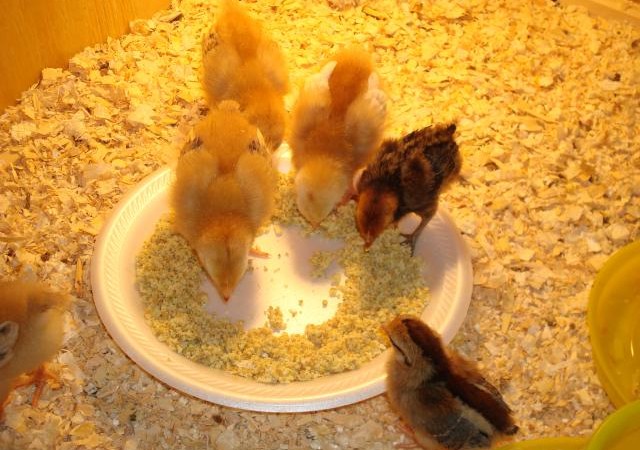

Chicks dehydrate quickly at the high temperatures of rearing, so they must find water quickly after hatching and learn to drink. Drinking often starts with the chick pecking at a bubble, and some water movement helps to start them drinking. A good idea is to lay paper on the floor and place the feed and water on that. The chicks will discover both by pecking. Remove the paper after a week as it will be soiled and by then they should all have learned.
Be guided by the smallest chicks as they’ll be slowest to learn. Provide 24 hours of light at this very vulnerable learning stage. By 3½ weeks, a chick will have drinking sessions of a minute long, and drink 11 times with a few seconds pause between each.
Chick drinks by placing the beak in the water, scooping up a beak-full which is then swallowed by holding the head horizontally or slightly raised. Drinker design has an important effect on chick drinking behaviour. Some trough designs are better than others at encouraging social facilitation in drinking, and some encourage roosting on the drinker.
Food recognition by the chick is complex. They will peck indiscriminately at various objects in their environment such as sand grains, shiny objects, other chicks and so on. They achieve success in finding food mostly by trial and error. If reared by a broody hen, the advantages of being taught by her tidbiting for food are obvious. She uses her vocal calls to encourage and guide them to eat the food items she indicates.
The use of glitter tape around the troughs or glass marbles among the feed is sometimes used to encourage chicks to start eating. Some starter feeds are often made up into three-dimensional crumbs to be more attractive, and feed is often placed on egg trays for the same purpose.
Studies showed that with a 10 hour light day regime, chicks up to 3 days old only spent 30% of their time eating, but by day 10, this had increased to nearly 60%. Chicks ate 34 times/day on day 3 and 123 times/day on day 10. Other chicks were observed to eat solid feed 30-25 times/day and they drank water 22-45 times/day. As age increases, the number of feeding times dropped but total feed eaten increased.
 Contact Jaguza Support
Contact Jaguza Support